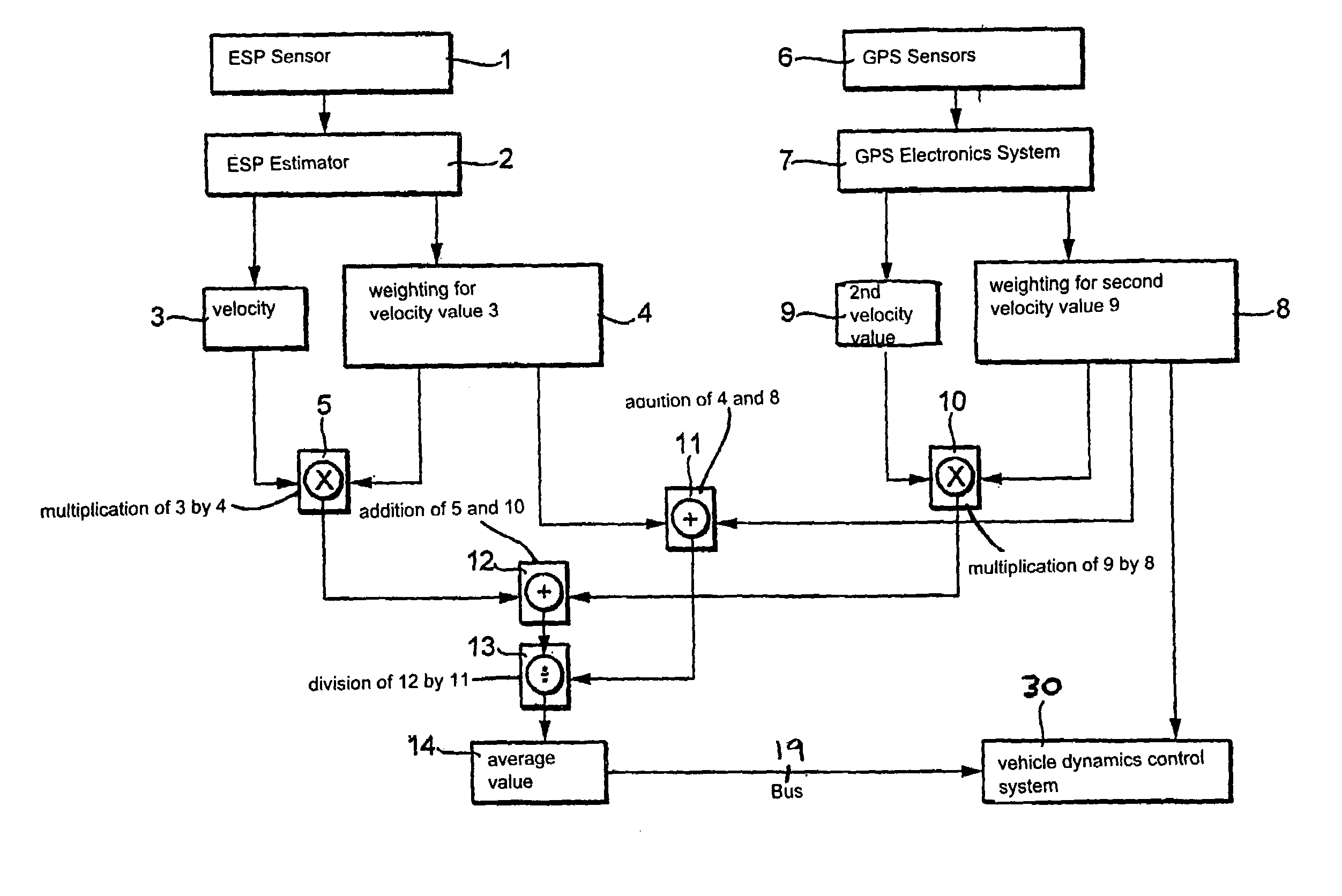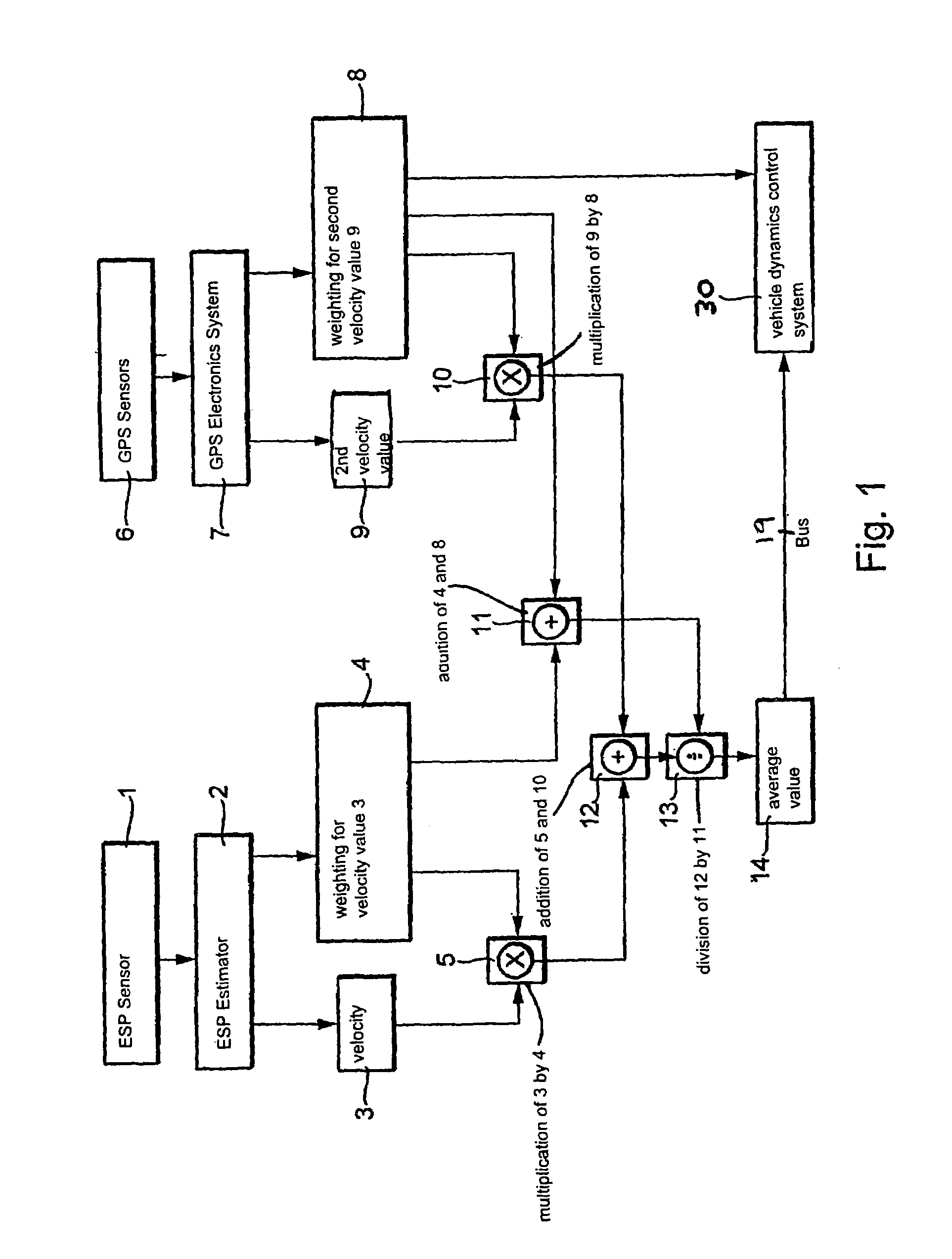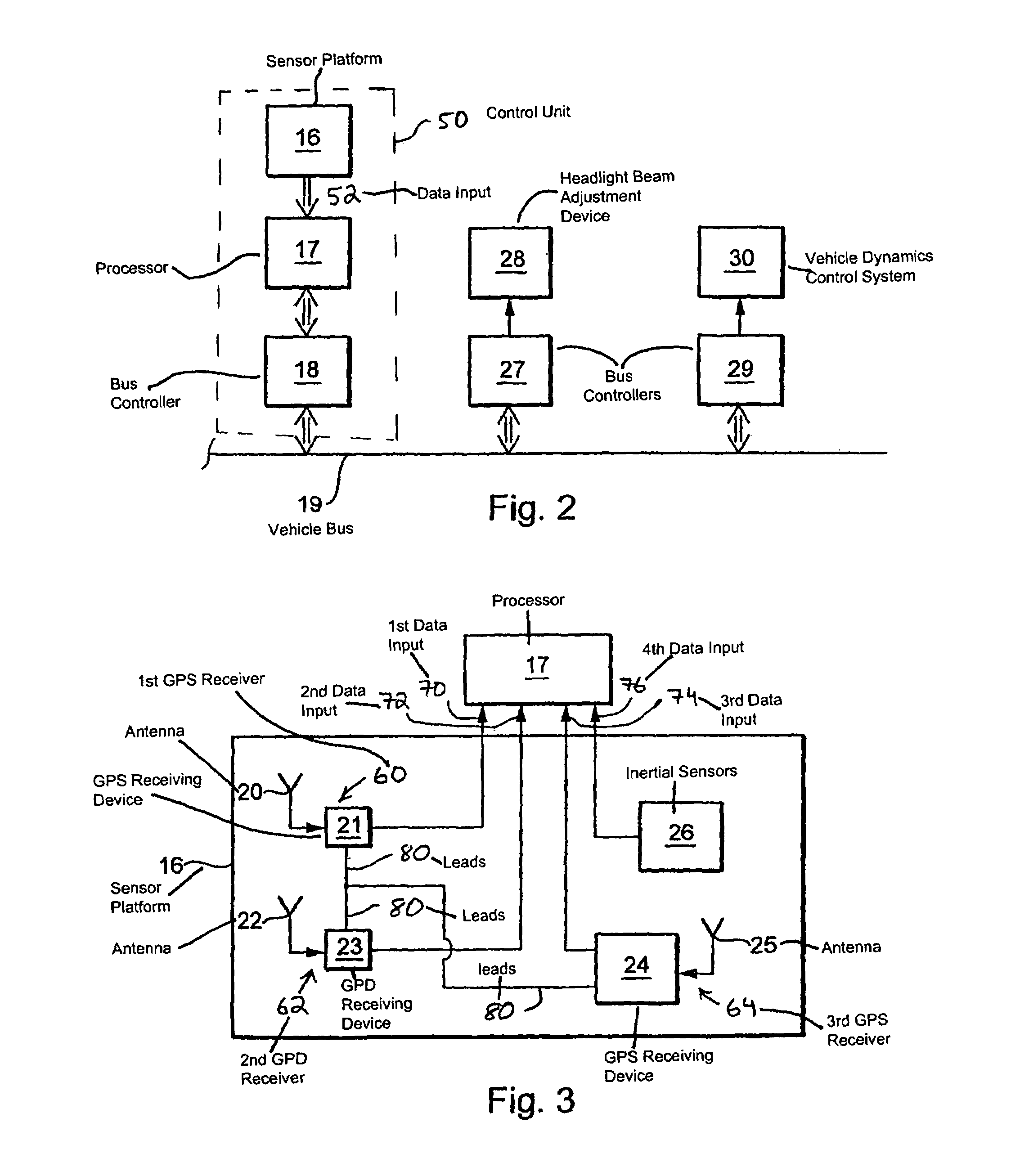Method for determining vehicle velocity
a technology of vectorial vehicle and velocity, which is applied in the direction of process and machine control, instruments, navigation instruments, etc., can solve the problems of shortening the stopping distance, and achieve the effect of improving the vectorial vehicle velocity, shortening the stopping distance, and improving the estima
- Summary
- Abstract
- Description
- Claims
- Application Information
AI Technical Summary
Benefits of technology
Problems solved by technology
Method used
Image
Examples
Embodiment Construction
[0010]For some time the suppliers of vehicle manufacturers have been working intensely on vehicle systems that are intended to stabilize the vehicle states in situations of borderline vehicle dynamics. ABS (anti-lock brake system), TCS (traction control system or ASR (anti-slip regulation)) and ESP are employed. The sensor technology on which such systems rely includes primarily yaw rate sensors, transverse acceleration sensors, and sensors of wheel rotation speed, brake pressure and steering angle. These sensors make it possible to determine the driver's intention in regard to direction and acceleration / braking, and on this basis the motion state of the vehicle is determined. Essential variables for correctly regulating the state of the vehicle are the vehicle velocity, the yaw rate and the float angle of the vehicle.
[0011]Control units are now able to have an intelligent sensor platform, where such a sensor platform represents an integration of inertial sensors, i.e., linear accel...
PUM
 Login to View More
Login to View More Abstract
Description
Claims
Application Information
 Login to View More
Login to View More - R&D
- Intellectual Property
- Life Sciences
- Materials
- Tech Scout
- Unparalleled Data Quality
- Higher Quality Content
- 60% Fewer Hallucinations
Browse by: Latest US Patents, China's latest patents, Technical Efficacy Thesaurus, Application Domain, Technology Topic, Popular Technical Reports.
© 2025 PatSnap. All rights reserved.Legal|Privacy policy|Modern Slavery Act Transparency Statement|Sitemap|About US| Contact US: help@patsnap.com



